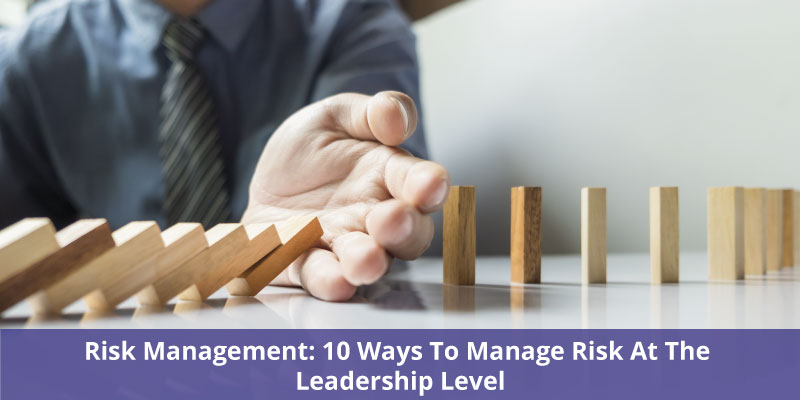Over the last decade, the business world faced unprecedented challenges and changes, resulting in a slew of compliance regulations. Taking the first step is always challenging, especially when setting up an effective compliance program. Although many organisations, even those at the beginning of their compliance journey, often have policies, training, and controls, they might have never undertaken a risk assessment.
Understanding the Concept of Compliance Risk
Compliance risk or integrity risk refers to an organisation’s potential exposure to legal penalties, financial forfeiture, and material loss. It results from failing to act according to industry laws and regulations, internal policies, or prescribed best practices. Compliance refers to the set of standards, regulations, and requirements and involves two crucial components:
Compliance Risk Management: What Is It?
Compliance risk management involves identifying, assessing, and mitigating potential losses arising from an organisation’s noncompliance with external and internal laws, regulations, standards, and internal and external procedures and policies. It involves the internal controls that an organisation puts in place to ensure that the business complies with its obligations and monitors those controls to confirm that they are effective on an ongoing basis.
If you want to learn about your business risks and how to handle them, you must search for the “best compliance risk management consultant near you” and talk to an expert.
Key Components for a Successful Compliance Risk Management
Enlisted are the essential components of a successful compliance risk management program.
Effective Policies and procedures: An organisation must produce clearly defined and consistent policies and procedures with the nature and complexity of its activities.
Effective compliance monitoring and reporting: An organisation must ensure that they have adequate management information systems that offer timely compliance reports like training, effective complaint systems, and certifications.
Oversight of active board and senior management: An effective board and senior management oversight is the cornerstone of an effective compliance risk management process.
Risk Management vs Compliance Management
There is a sharp contrast between risk and compliance management, as the operations require distinct methods and execution strategies. Enlisted are the three key differences.
Prescriptive vs Predictive
Compliance is prescriptive and results in a more tactical and check-the-box approach. On the other hand, risk management activities are predictive, anticipate risks, and require a strategic approach.
Siloed vs. Integration
A siloed compliance department or isolated initiatives across various departments are the driving forces behind compliance. On the other hand, effective risk management programs fail to work in silos. You need to integrate\ procedures, departments, and IT systems to evaluate the risks of a business and manage them to prevent their consequences or generate value.
Tactics vs Strategy
Noncompliance results in massive penalties and reputational damage; therefore, an organization must never underestimate it. Compliance requires a testing approach and ensuring that your organization obeys the rules. On the other hand, risk management relies mostly on long-term analysis to determine risks worth taking.
If you are looking for ways to take your business sky high, search for the best “risk and compliance service” near you.
Compliance Risks: Types
Compliance risk is the potential for losses and legal penalties. It results when an organization fails to comply with the laws and regulations. Enlisted are the major types of compliance risks.
Environmental risk: It is the potential damage caused to a living organism in the environment arising out of an organization’s activities.
Workplace health and safety: It includes all aspects of health and safety in the workplace, such as accidents are repetitive strain injuries.
Corrupt practices: These involve the risk caused by an organization’s activities that harm its workers or people in the communities.
Quality: It involves releasing a poor quality product or service that fails to meet the expected level of due diligence in the industry.
Process risk: It involves the risk where your process fails, causing legal violations, such as failure to meet the responsibilities to meet your customers or partners.
Often businesses require consulting services. If you want the same for your business, feel free to search for “the best management consulting services” online and speak to the experts.
Systematic Guide to Compliance Risk Assessment
To help organizations create safe workplaces, they must follow the enlisted steps while assessing the risk.
Identifying the hazards
Identifying and locating potential hazards is the first step in a risk assessment. An organization must consider several types of hazards.
Decide who might experience harm and how
After identifying the hazards in the workplace, consider the reason for them being harmful. It includes considering the types of injuries or ill health they might causeYour risk assessment must also include the people who might experience the risks.
Evaluate the risk and take appropriate actions
You need to evaluate the likelihood and the severity of the risks and then decide and implement the control measures and precautions. Often you cannot eliminate risk; therefore, taking appropriate action to mitigate the risk is essential. It means the risks that pose a bigger threat should receive more extensive control measures than low-risk hazards.
Recording the findings
Recording the findings of the risk assessment helps you to review the assessment in the future. A written risk assessment proves that you evaluated the risks and took appropriate actions to mitigate them. It further protects your business from legal liability and may be useful for raising awareness among contractors and employees about the potential risks.
Reviewing the assessment
It helps to ensure that the assessments are up to date and includes all potential hazards.
If you suspect your company requires an effective risk management strategy, search online with the term “compliance services in India” and connect with the industry leaders.
Compliance Risk Assessment: What is it?
A compliance risk assessment identifies risks that a business experiences concerning its legal compliance, internal policies and procedures, and other compliance-related matters. It helps analyze how your organization might fail to meet its regulatory compliance obligations. Identify compliance duties imposed by various laws, regulations, and industry standards. Identify how well your organization’s existing compliance programs meet the expectations.
You can search “payroll services in India” if your company requires payroll services. We are always ready to help you.
Why Compliance Risk Management?
An organization must procure an effective compliance management solution that helps them perform their duti4es and reduce risks. Here are the top benefits of the compliance management system.
Helps maintain business process workflow to minimize risk
Compliance management solutions come with various features offering amazing benefits. The most important among them is the ability to integrate various business processes. It serves as a central repository that saves business critical information and shares it with stakeholders.
Ensures security of the system via authentication
Before gaining access to the organization’s portal, employees need to authenticate themselves. It means that vital information never ends up in the wrong hands.
Helps assess risks in multiple areas
Compliance management helps assess risks in all Governance Risk and Compliance functional areas. The major areas covered include:
If you have any legal queries, search with terms like “legal compliance service provider near me” and connect with the experts.
Conclusion
Most companies strive to build a strong and successful compliance risk management system. Without a compliance risk management system, it is tedious for any organization to track or measure compliance. Ma Foi’s services include a detailed review of the establishment and business compliances, a comprehensive assessment of the applicability of acts and compliance, identification of compliance gaps and gap reporting, and several others.

Accustoming to an ever-changing risk landscape has become a challenge for most businesses, a necessi
Learn More

Following the 2008 crisis, financial establishments have been spending billions of dollars on risk m
Learn More